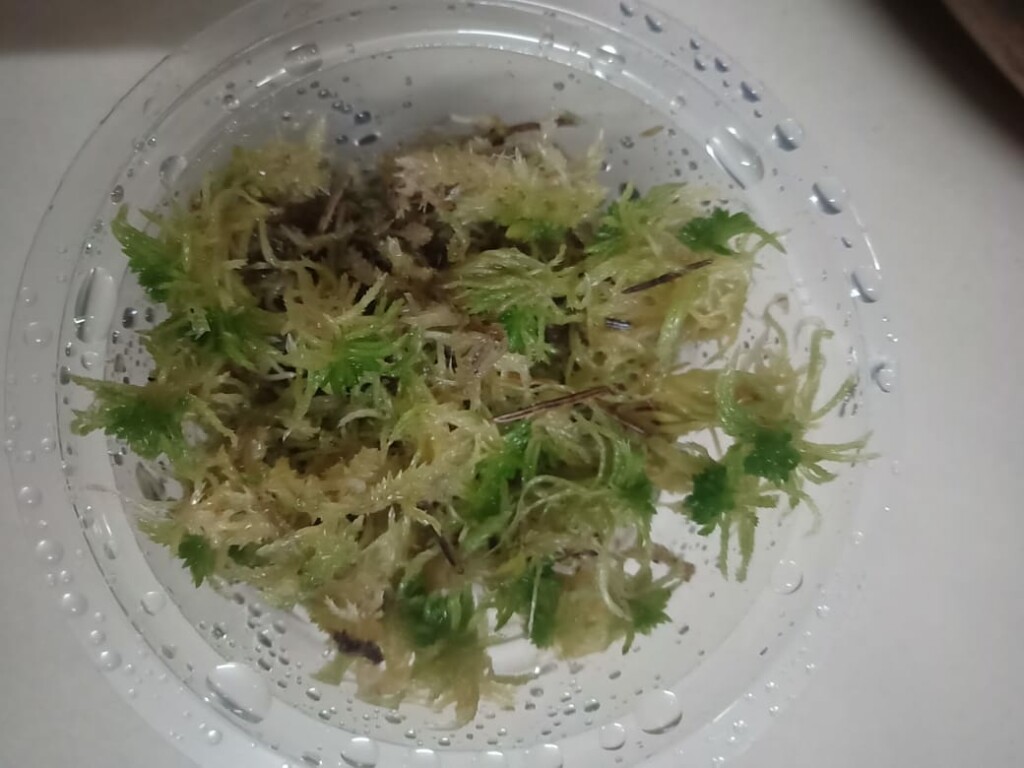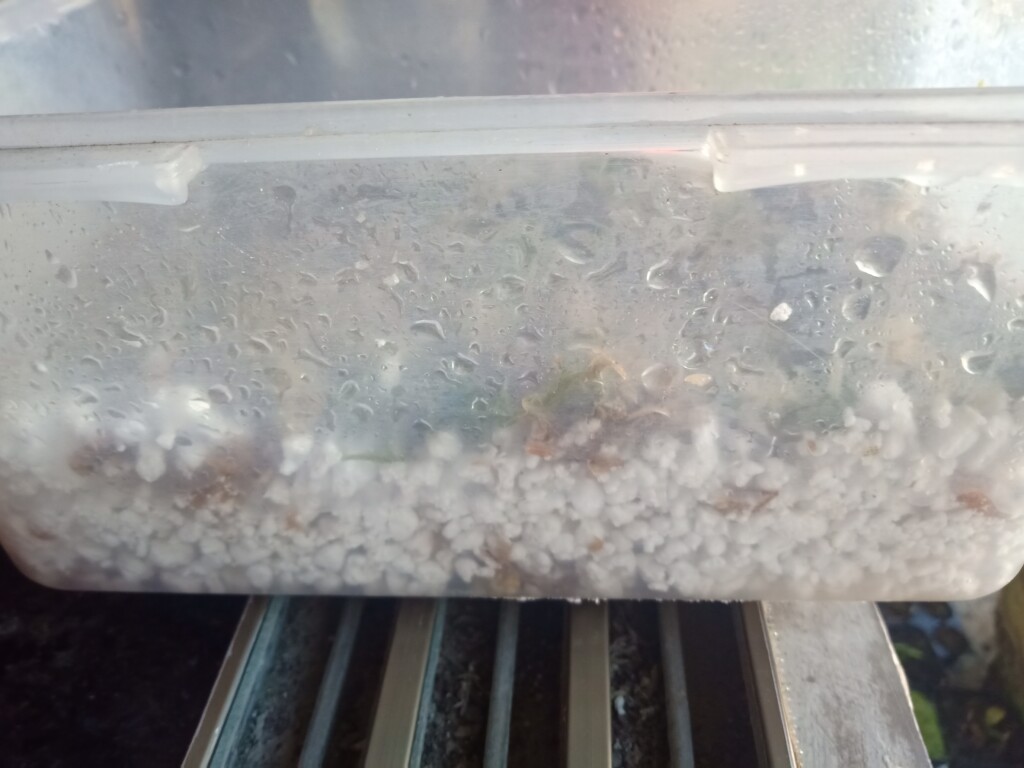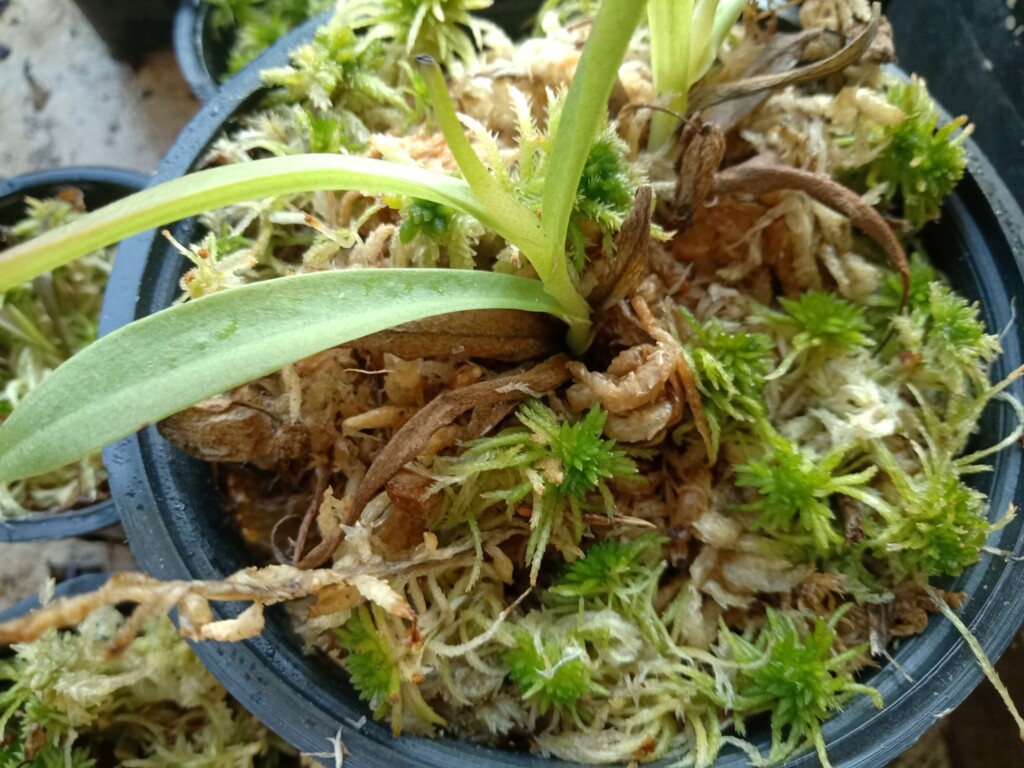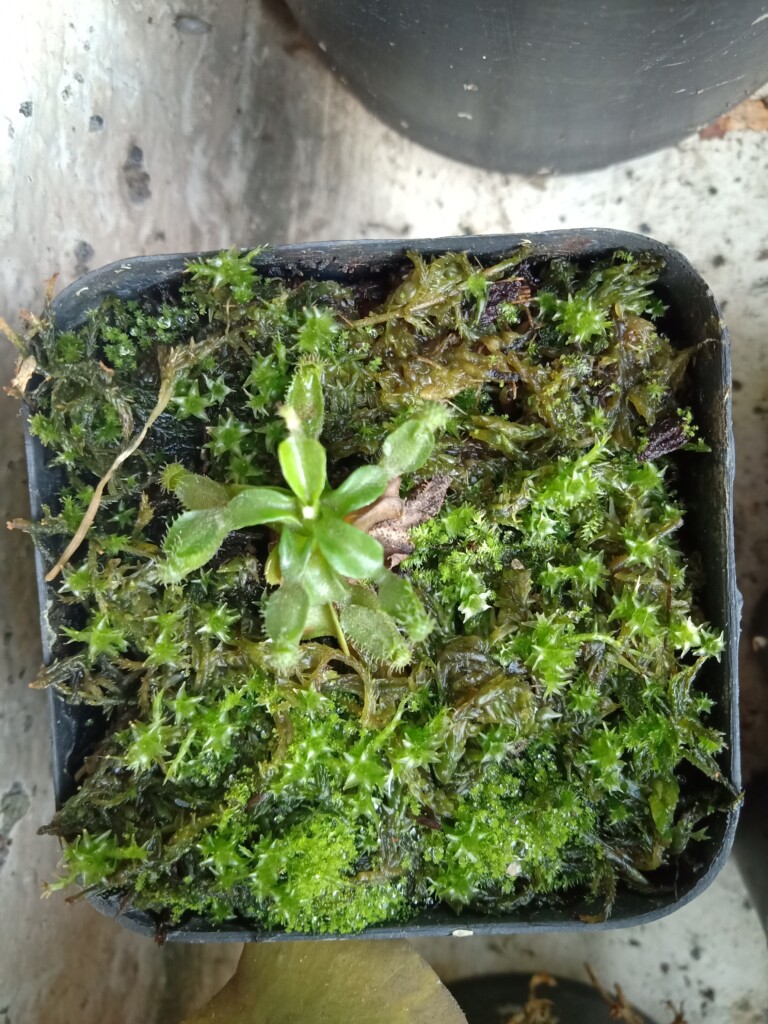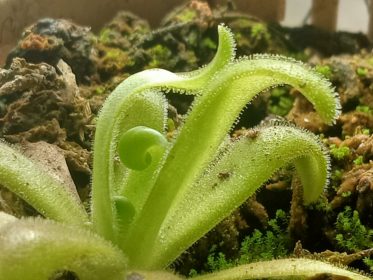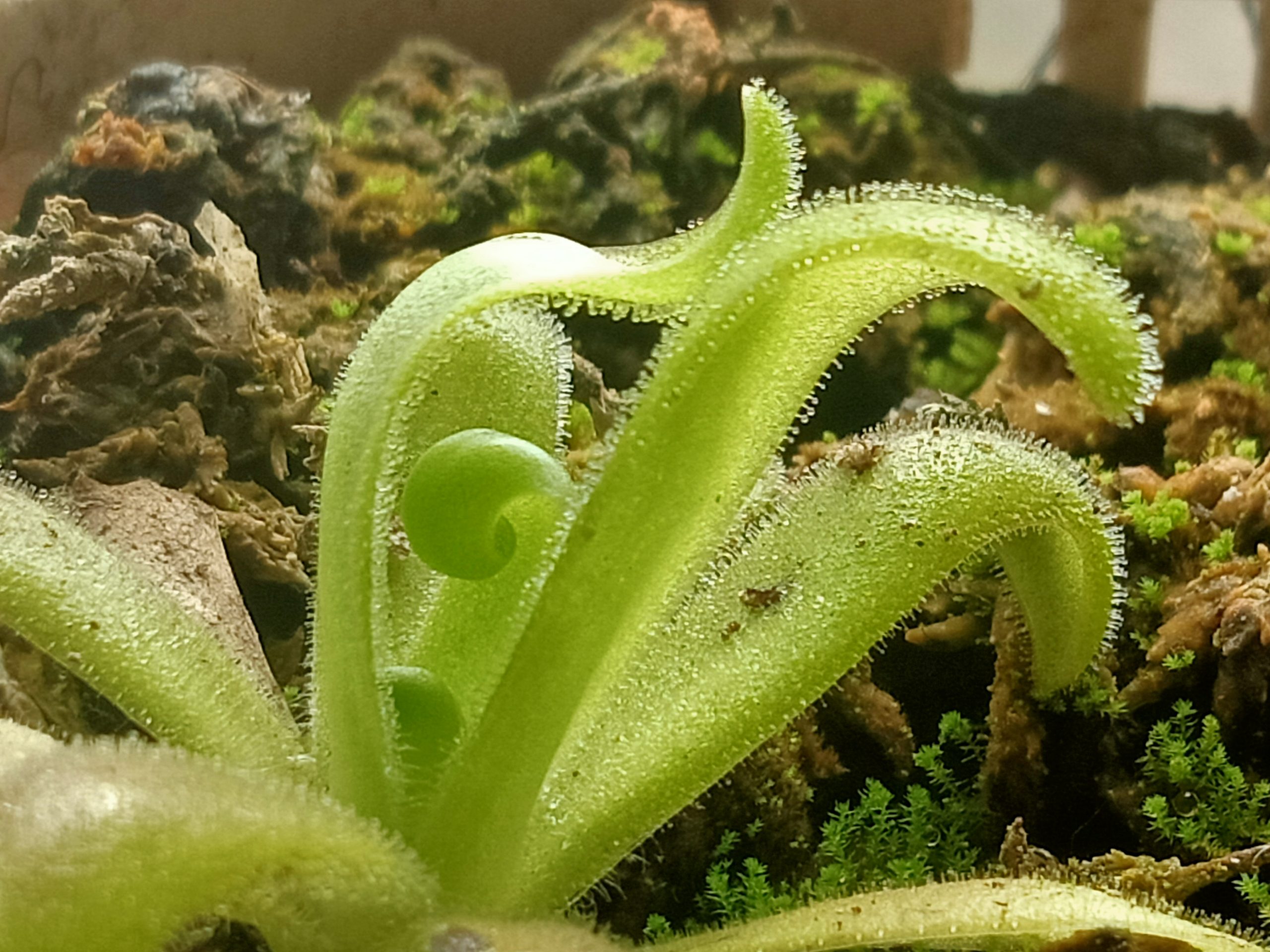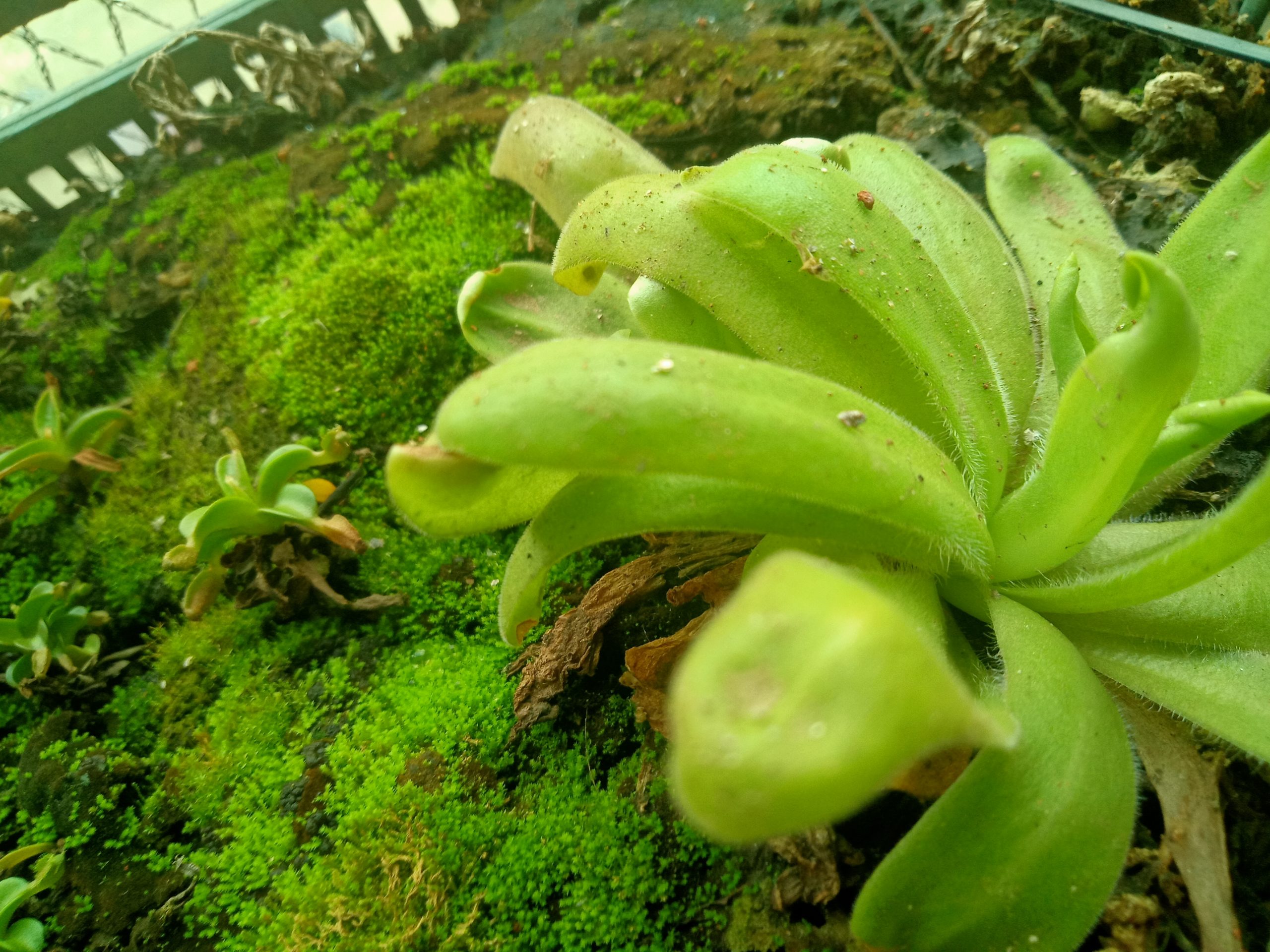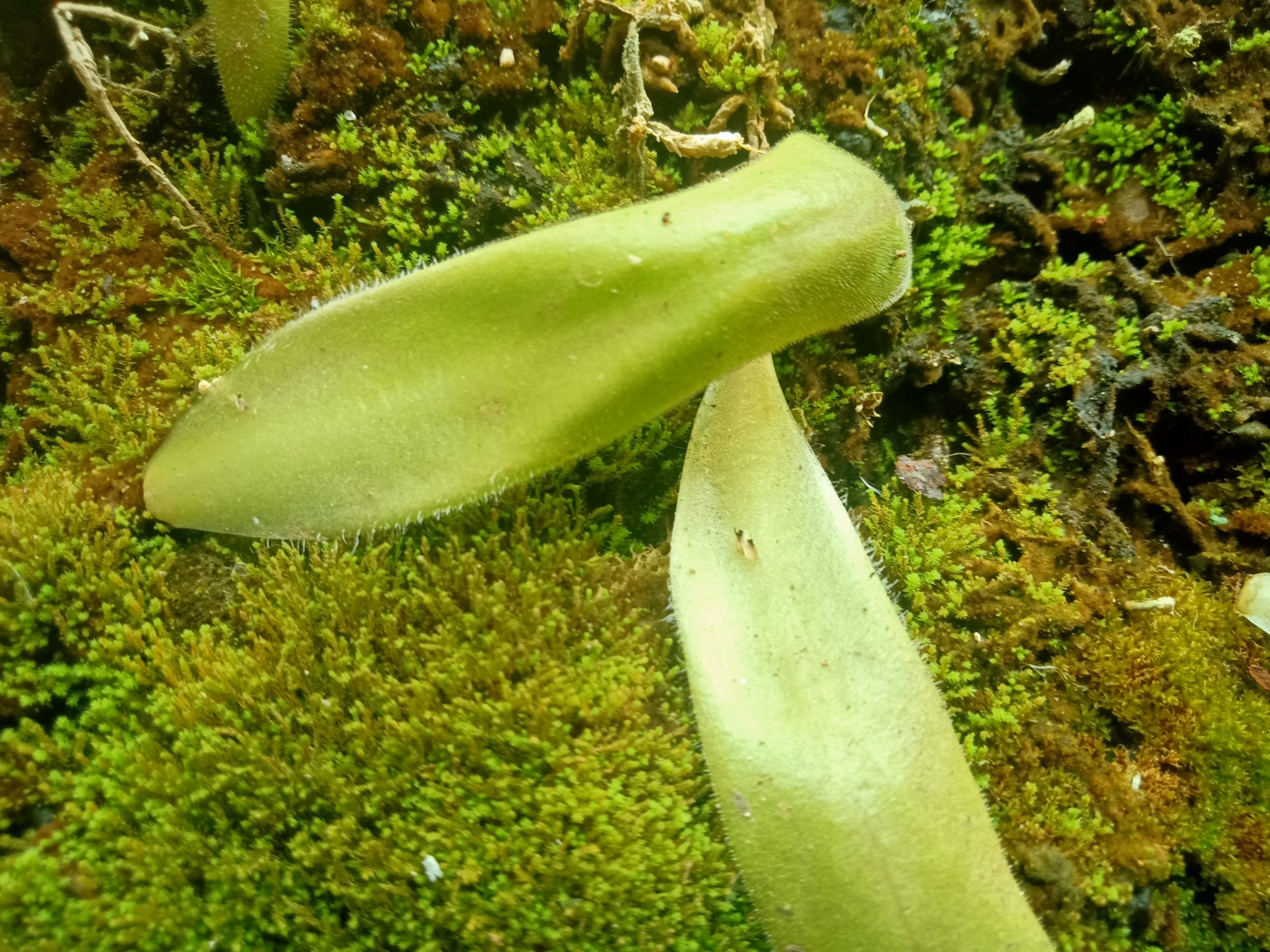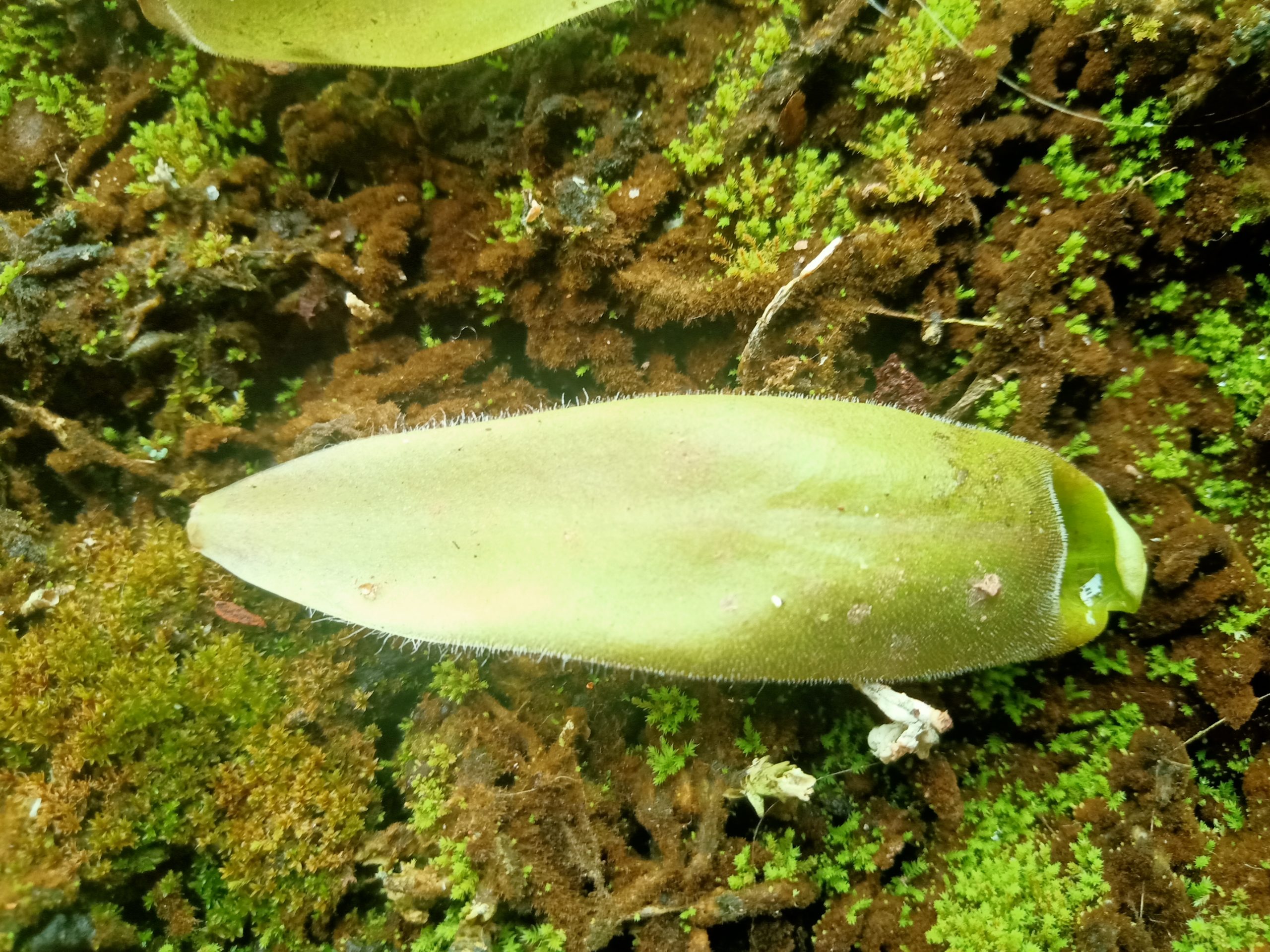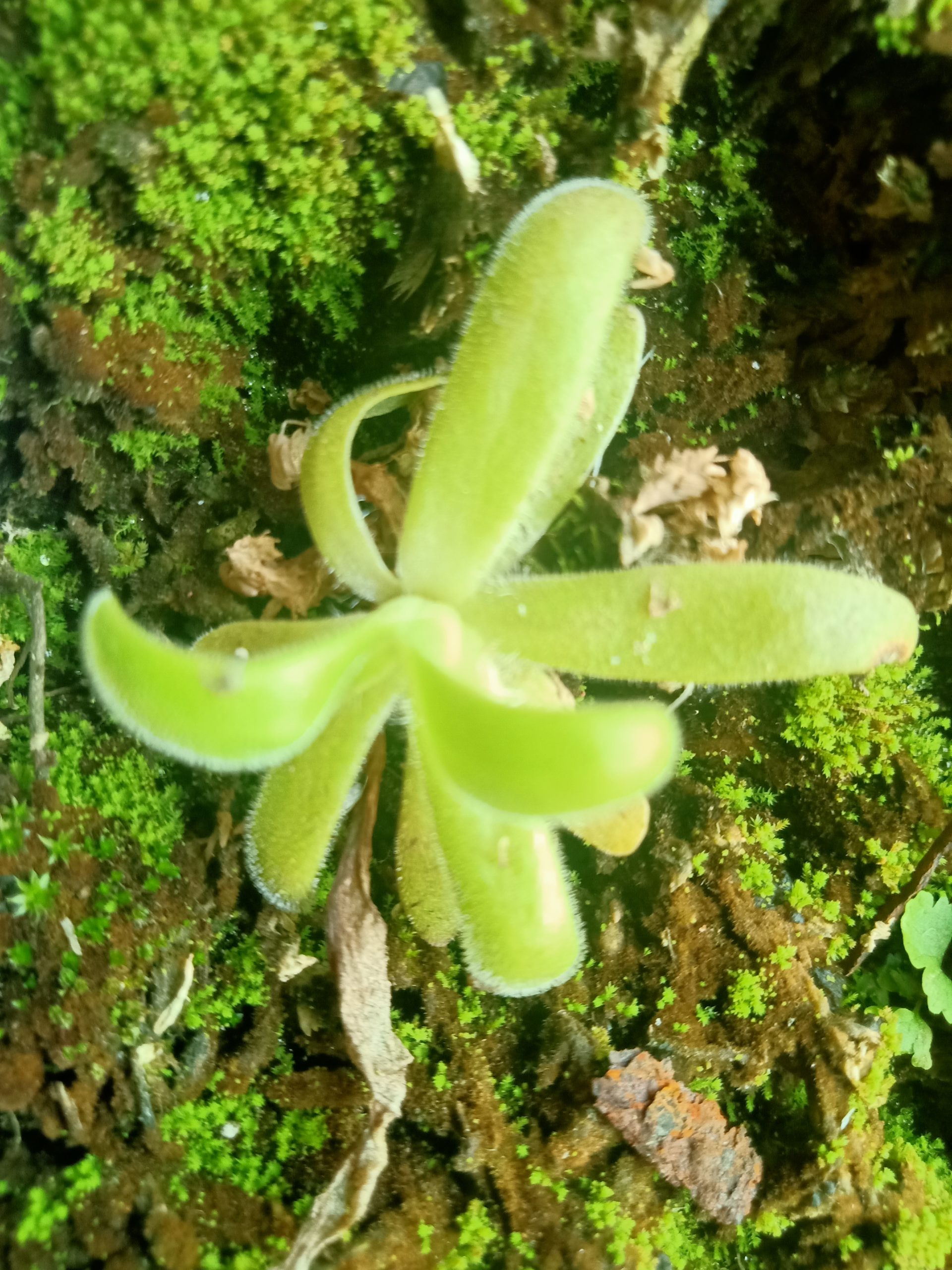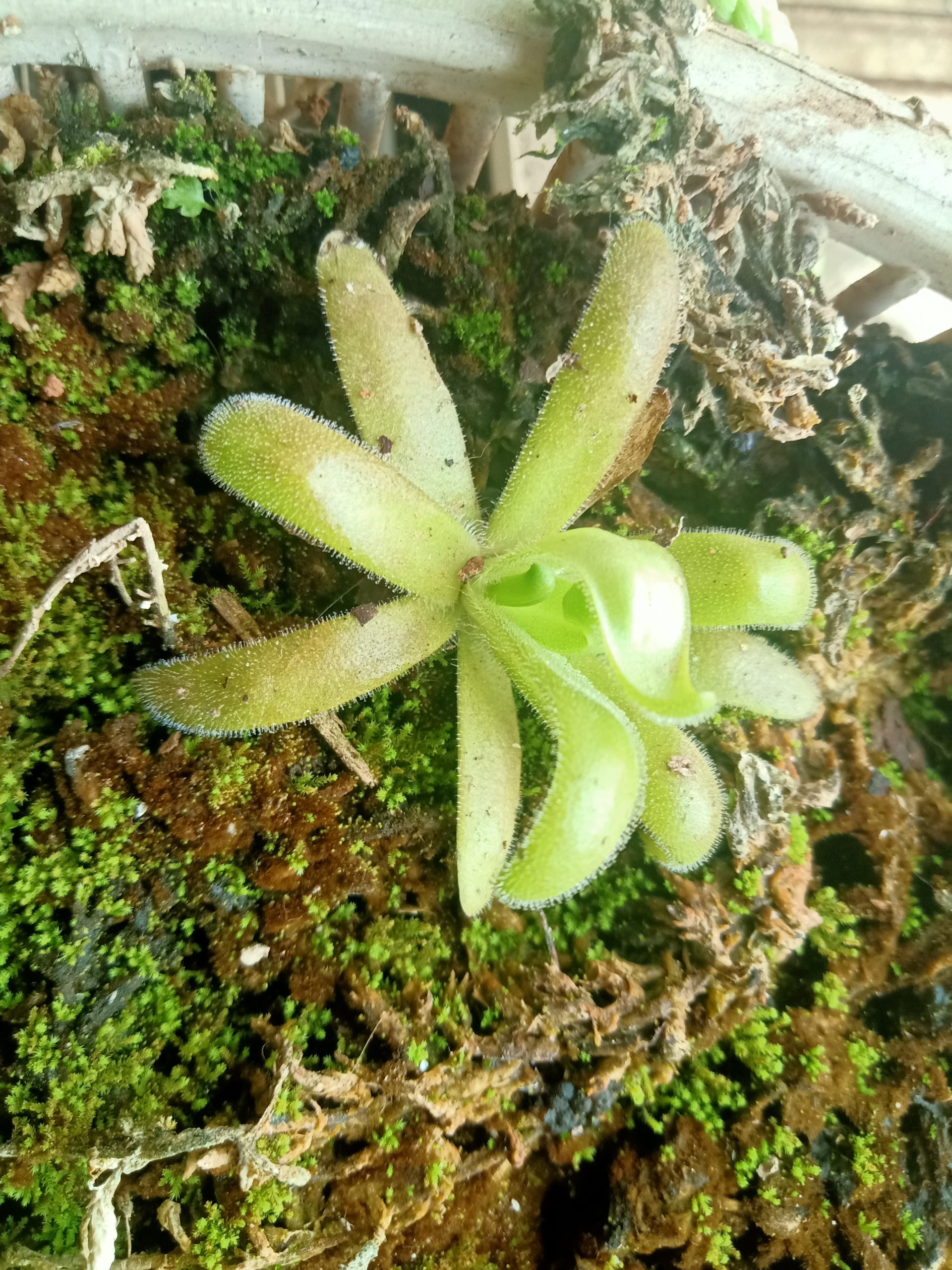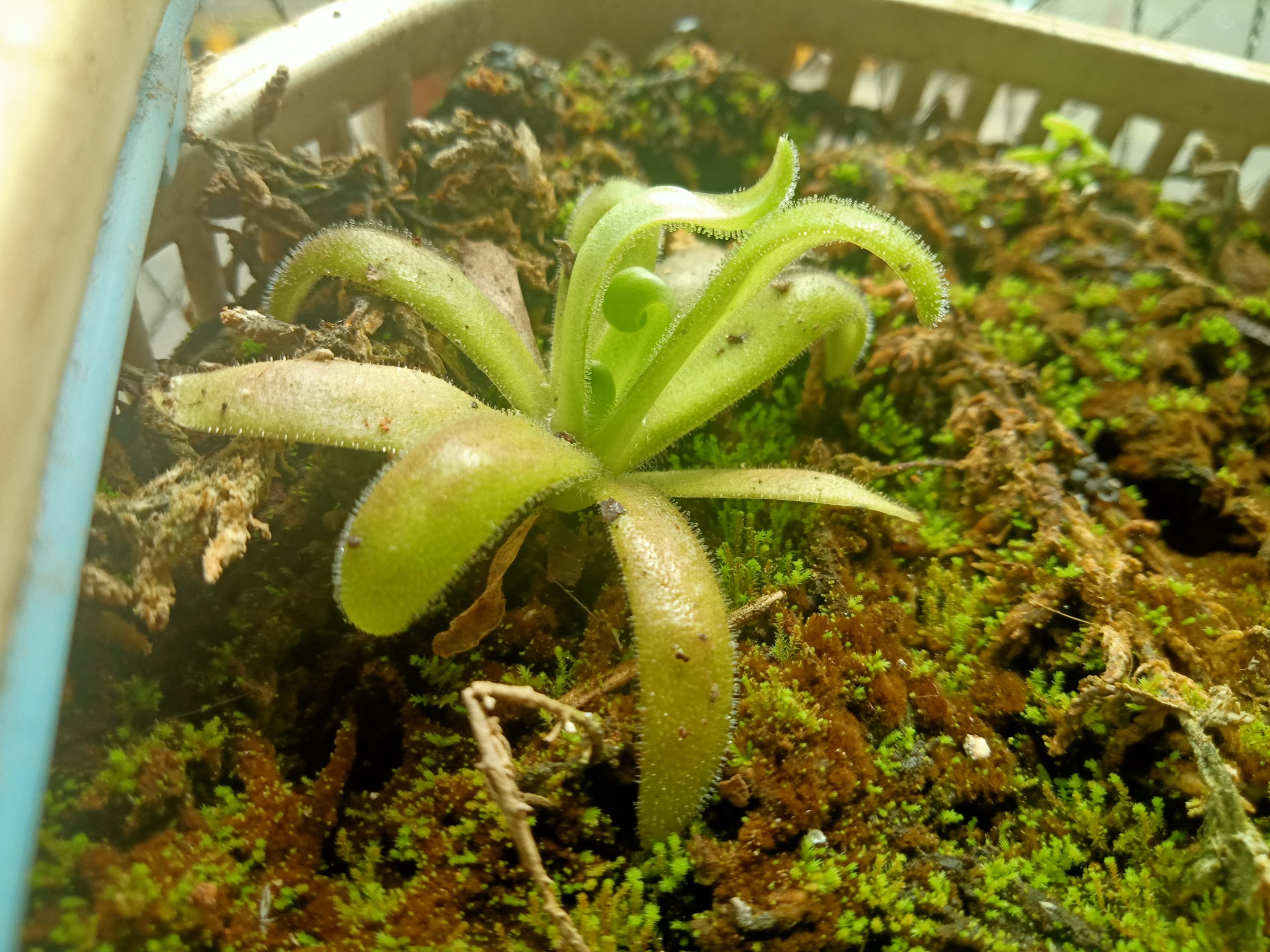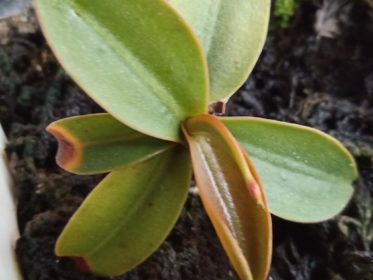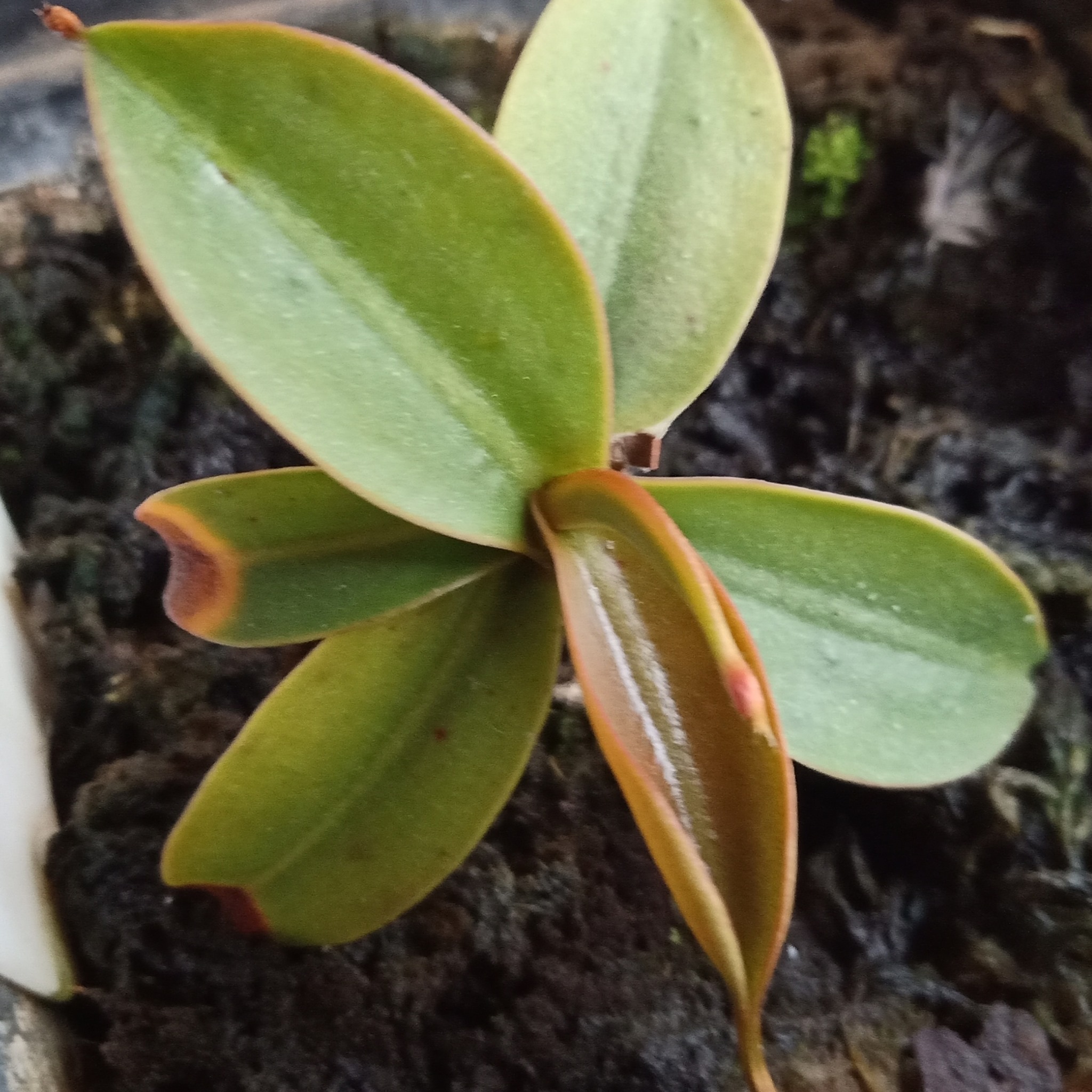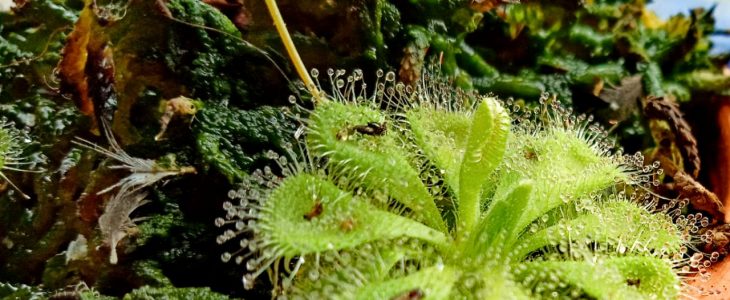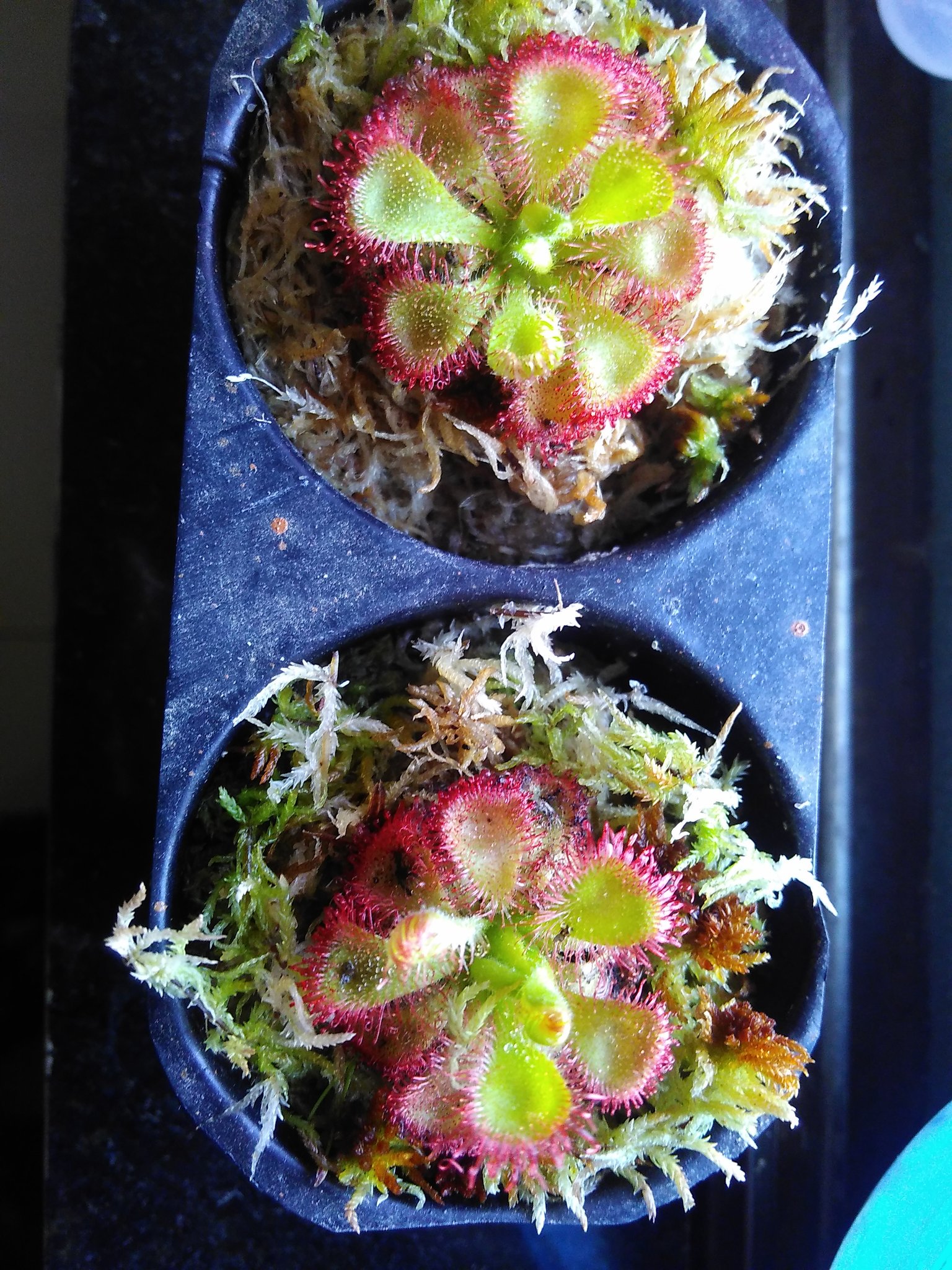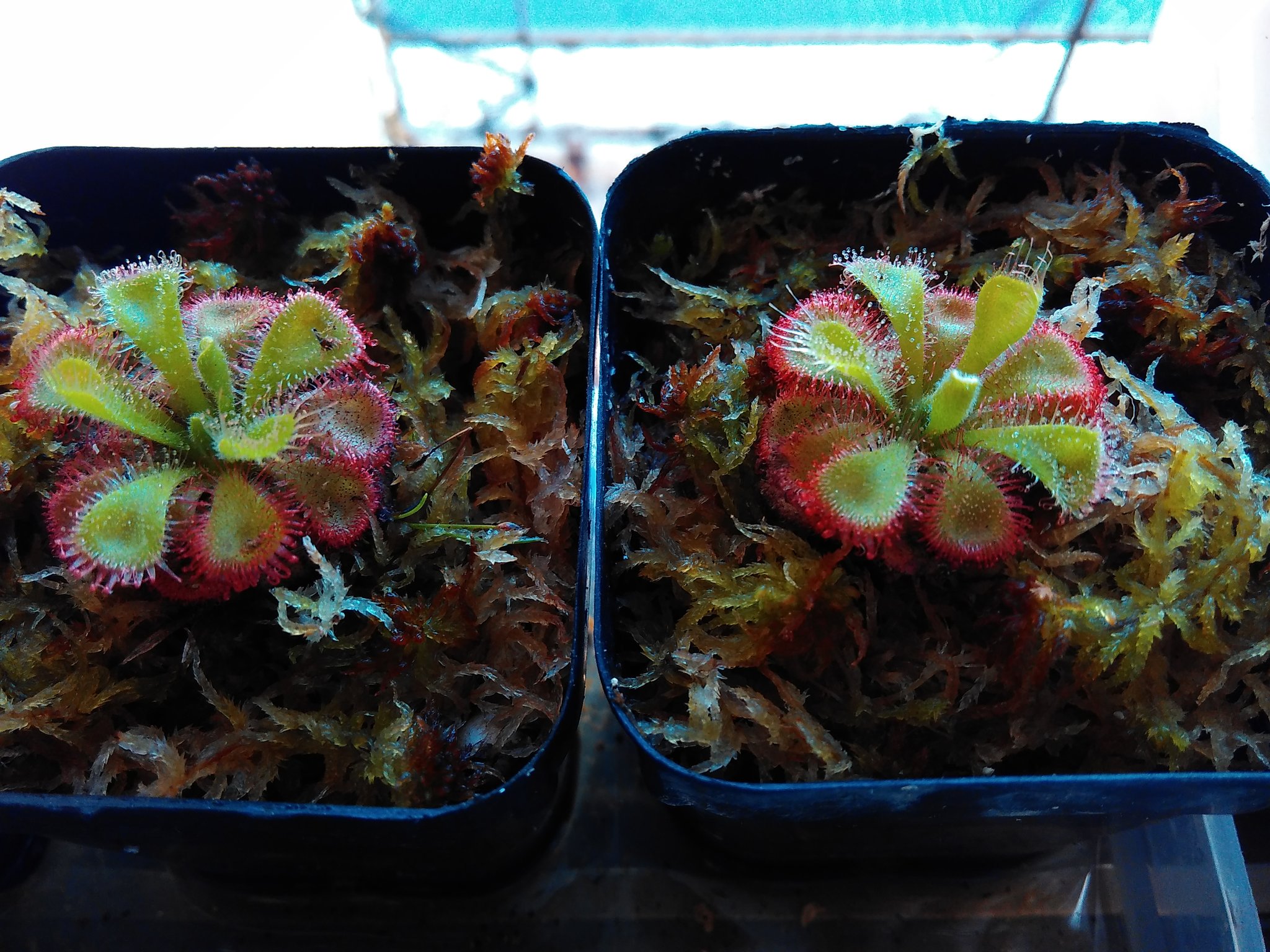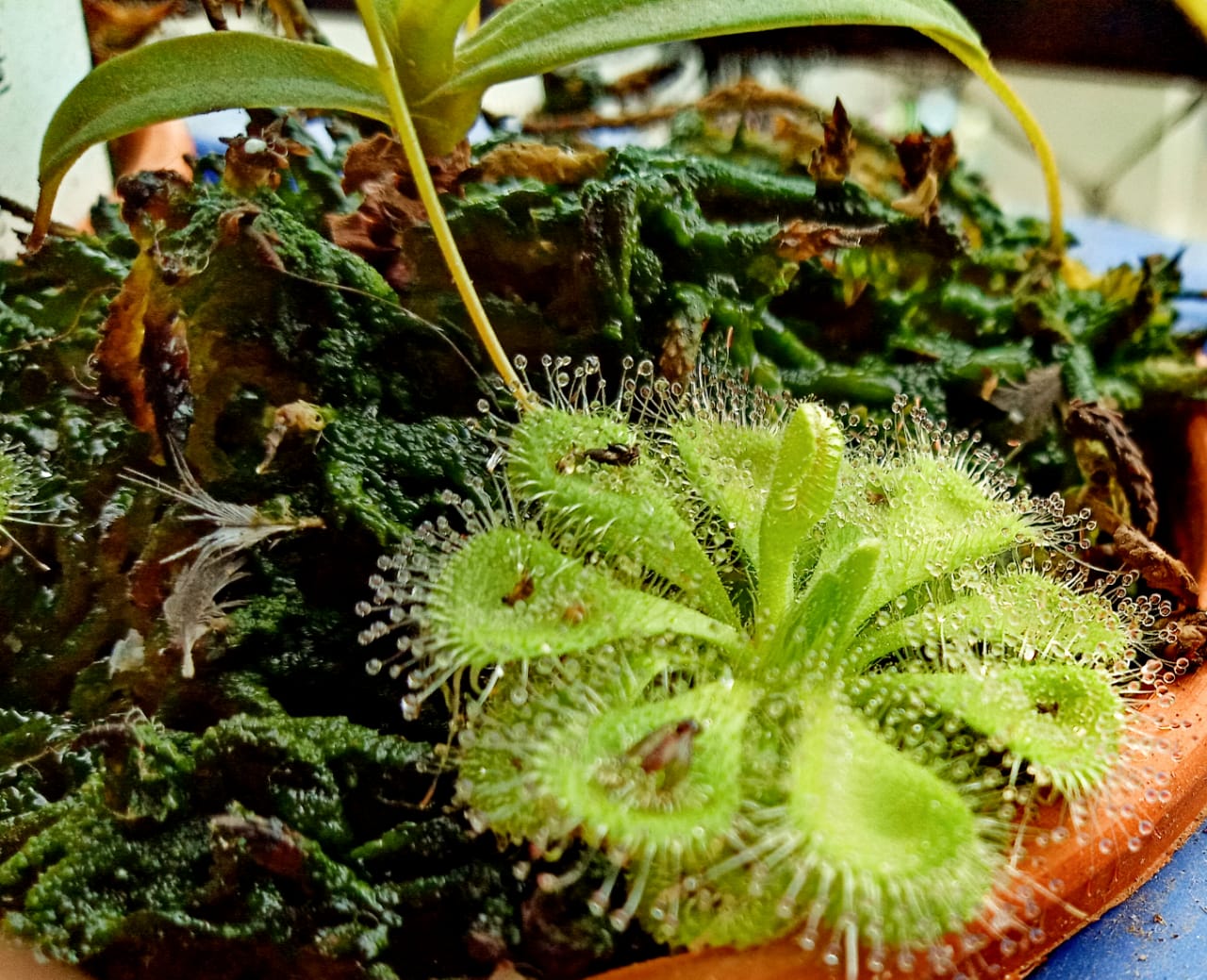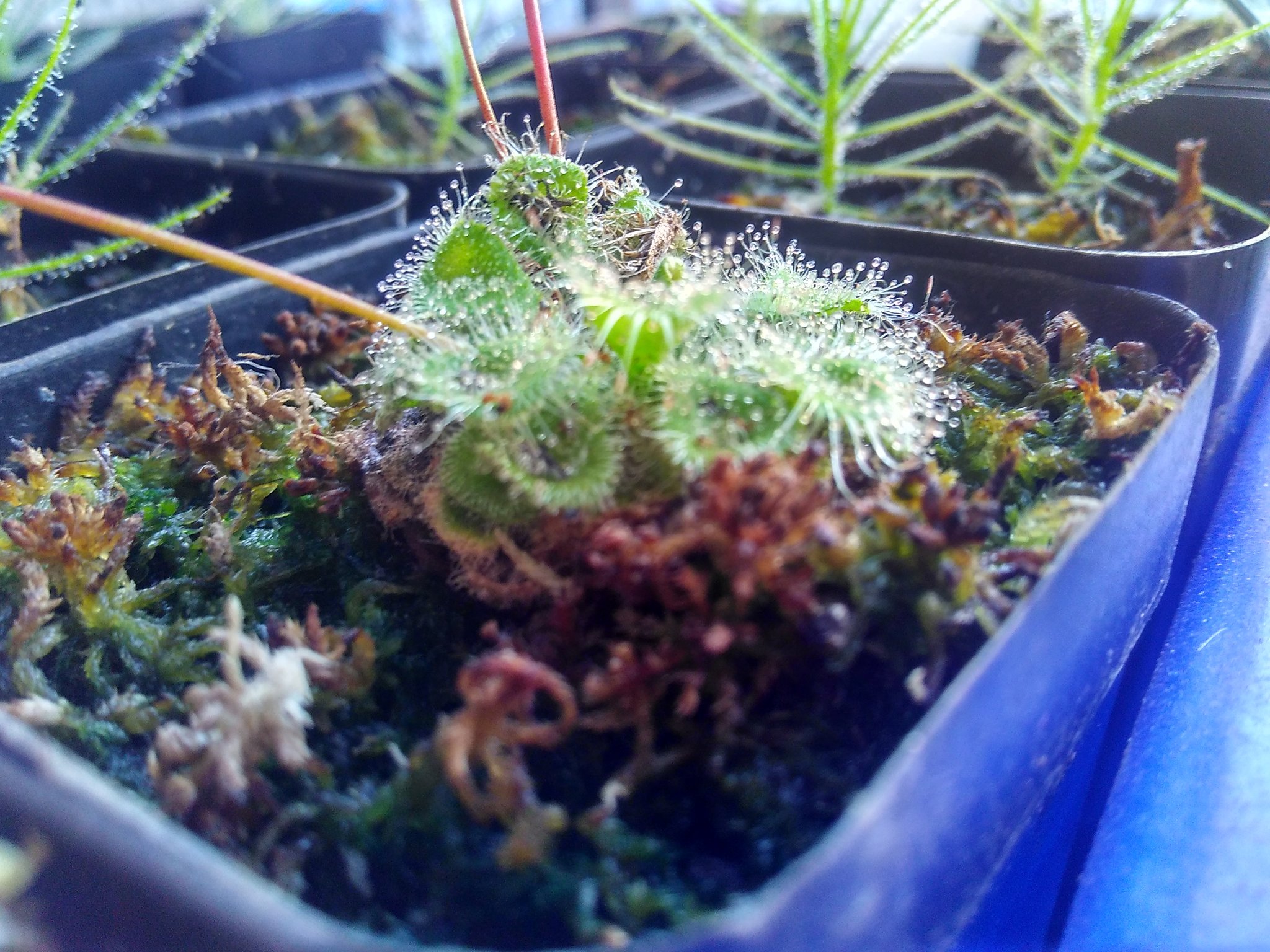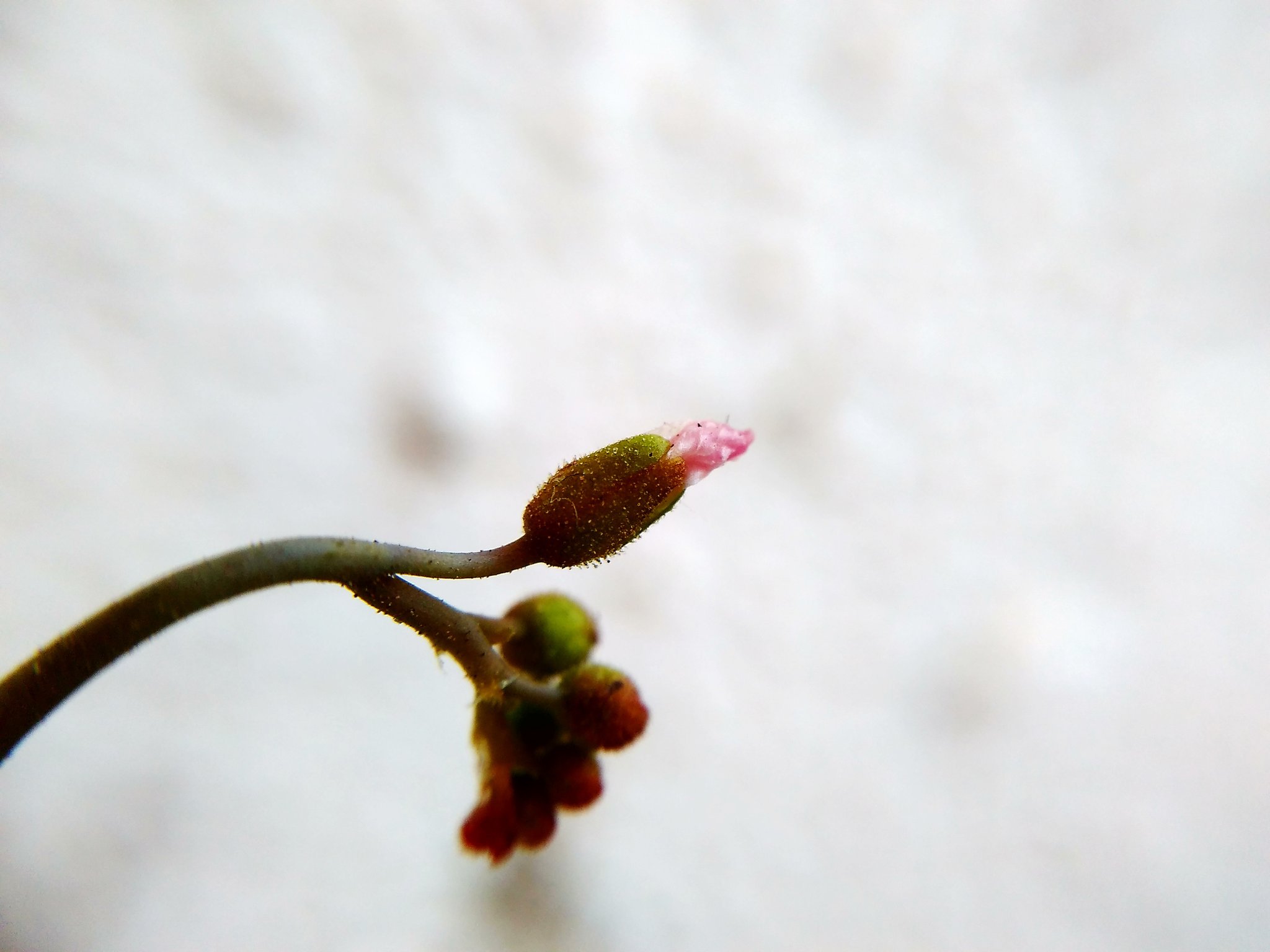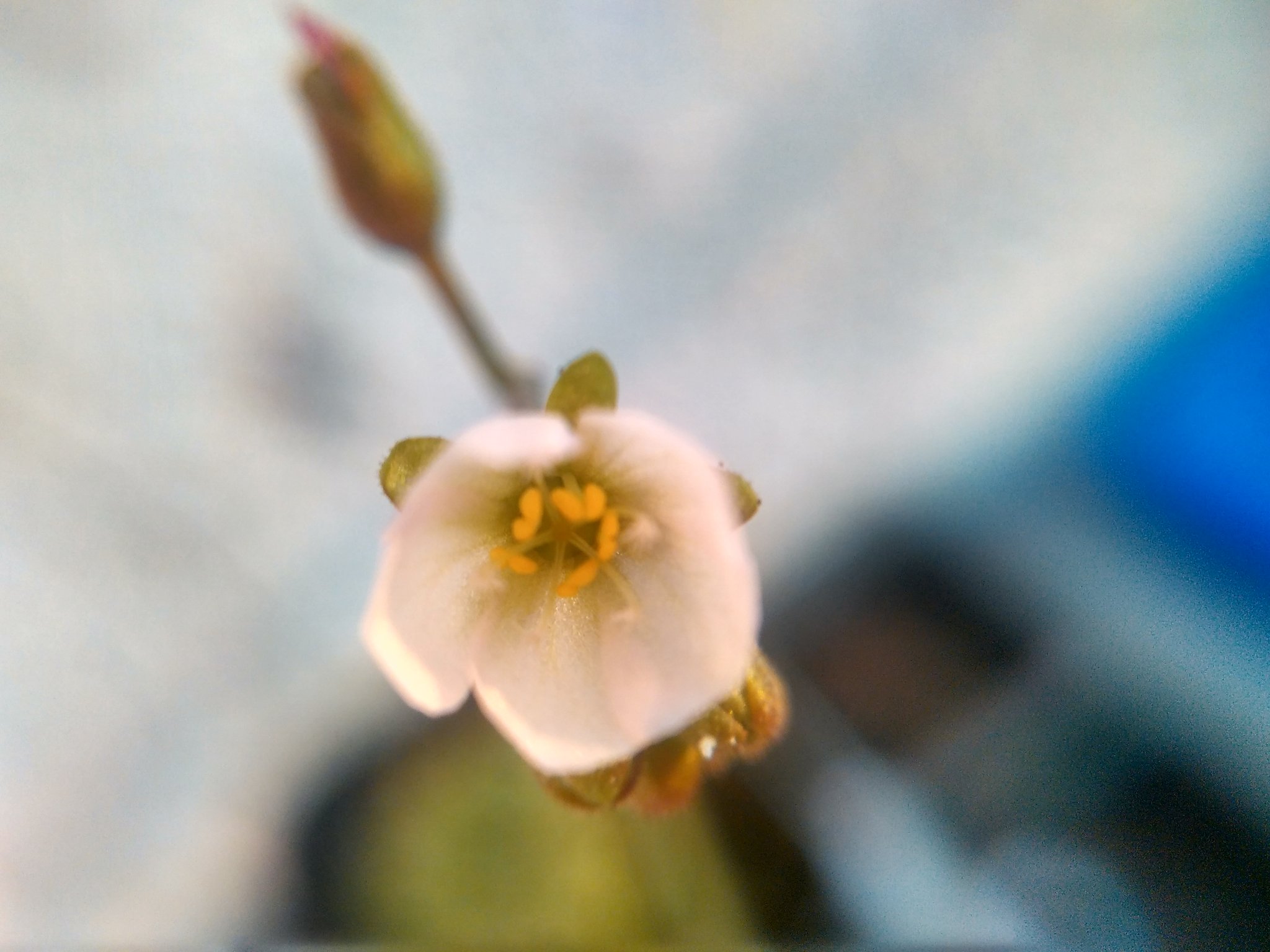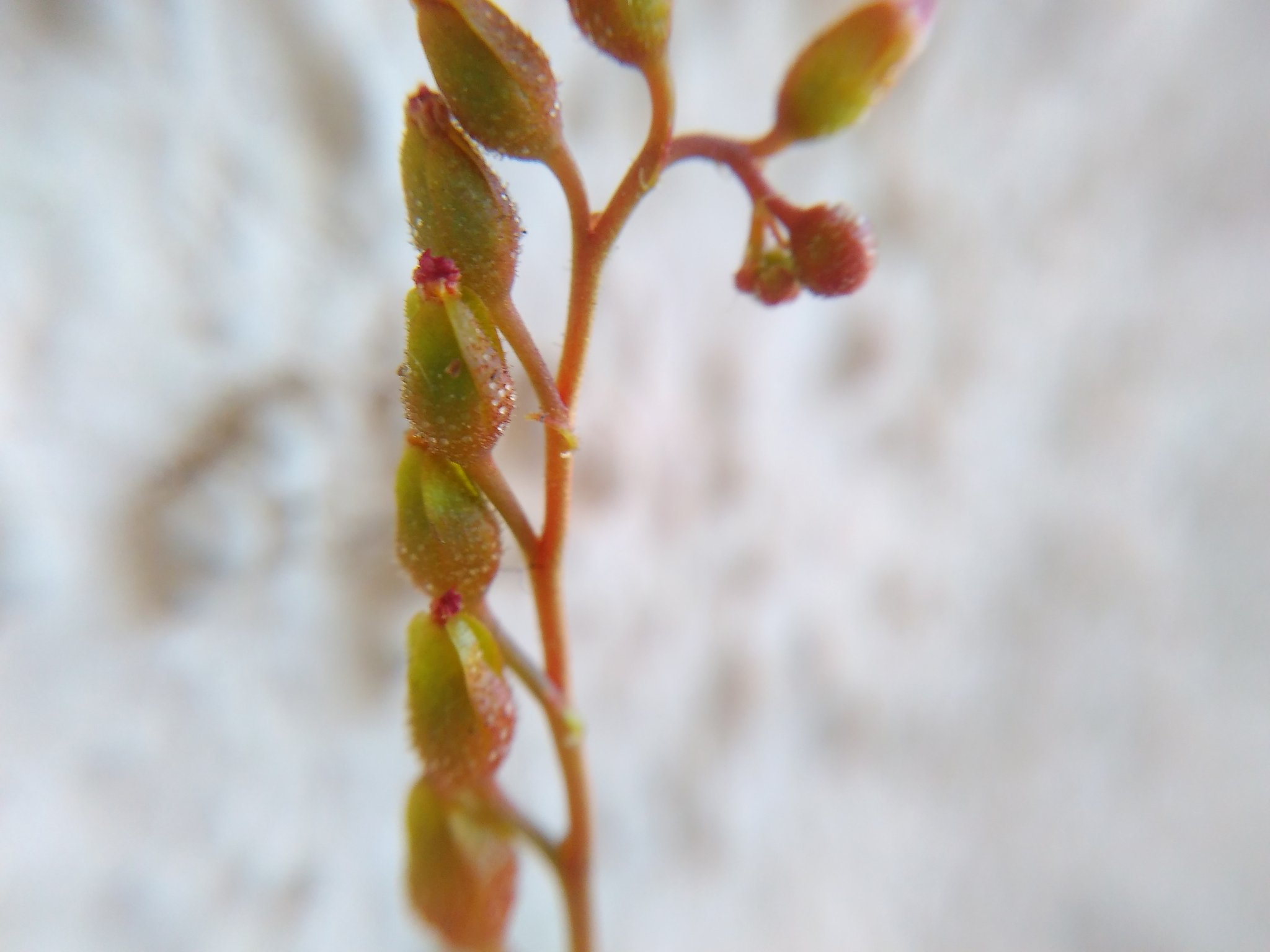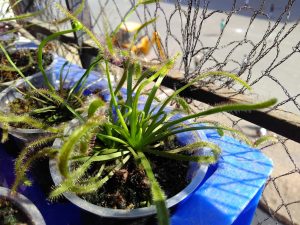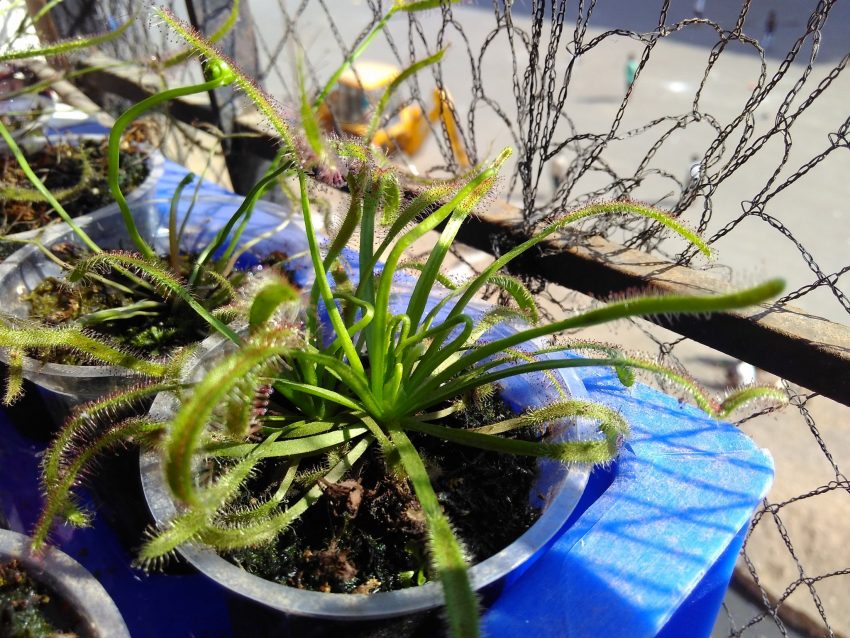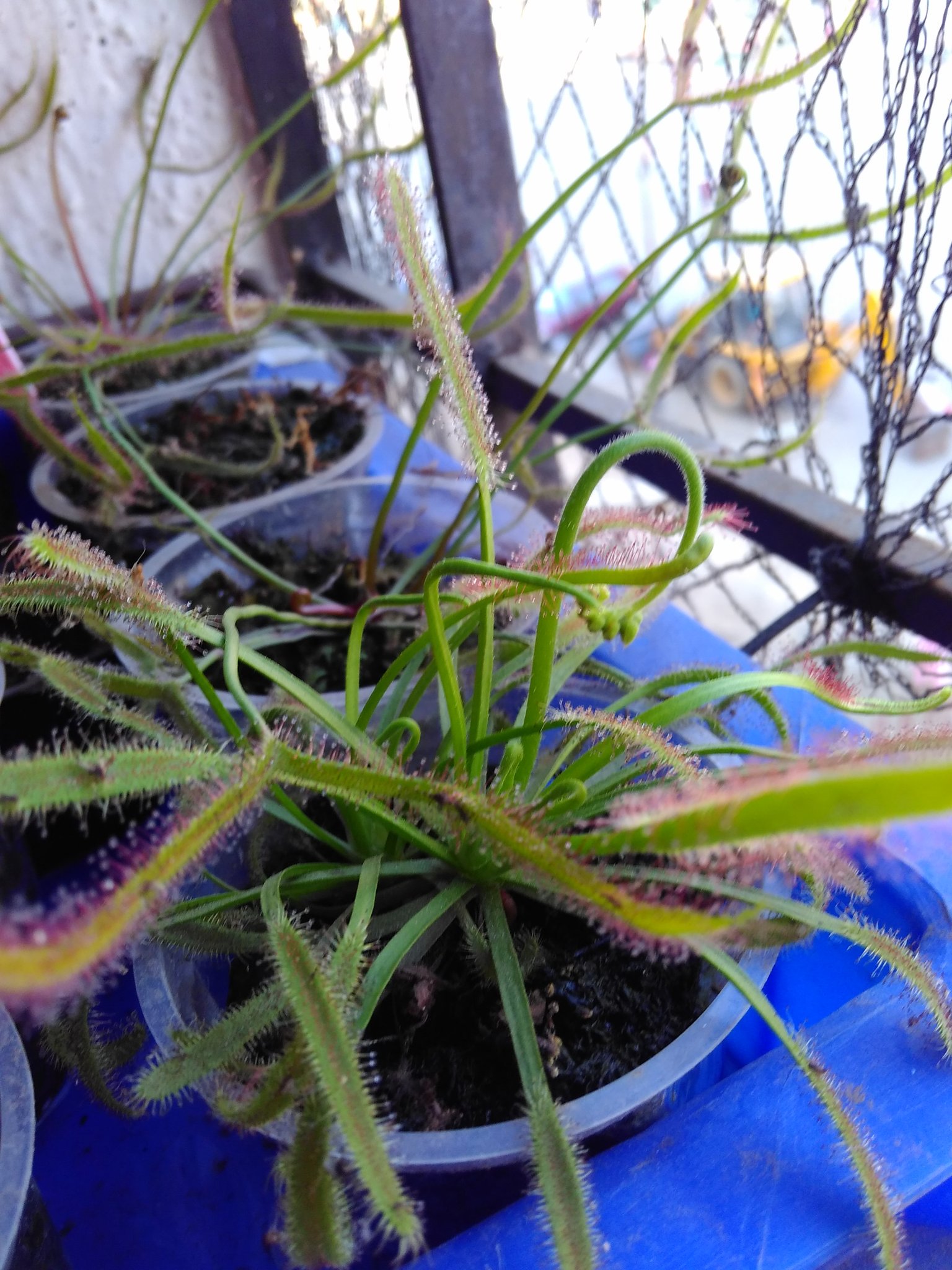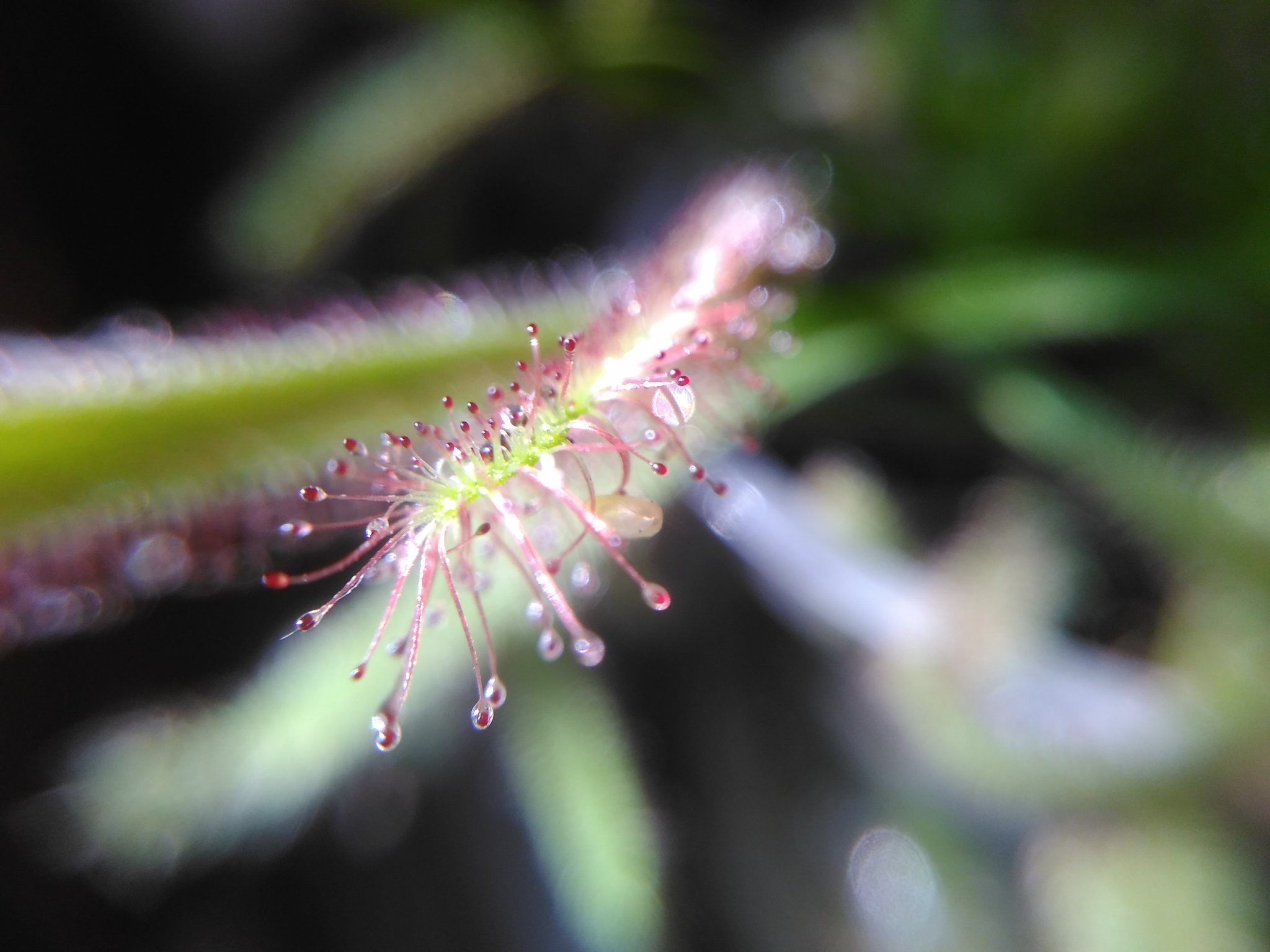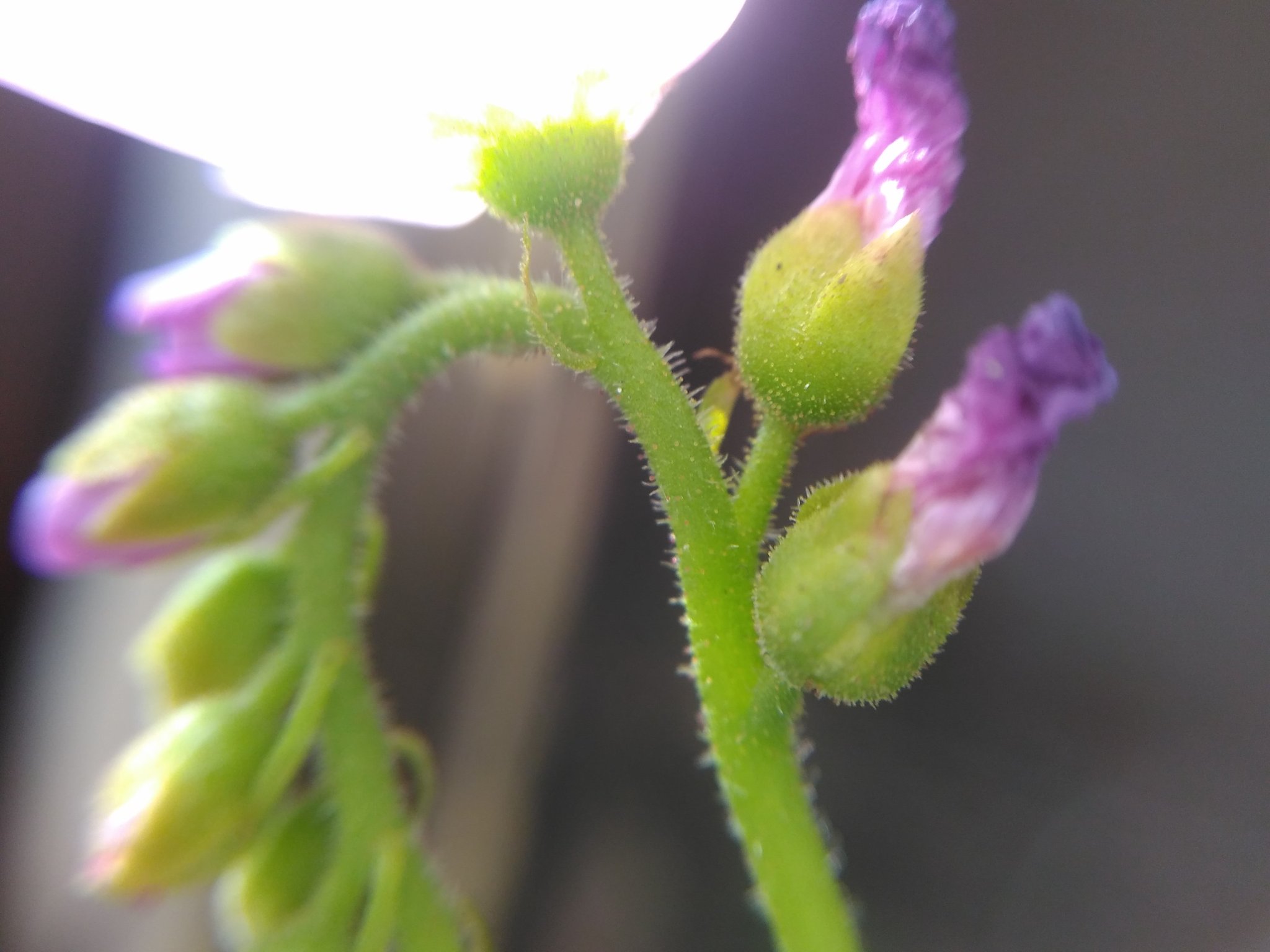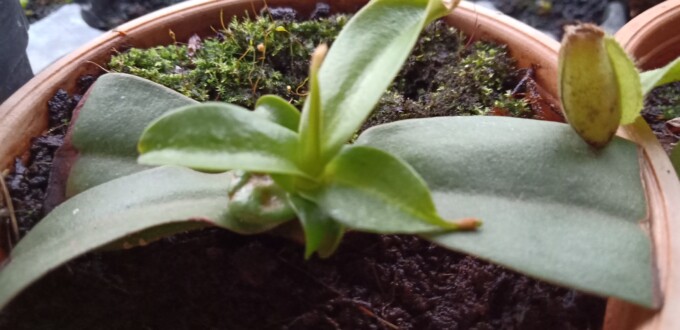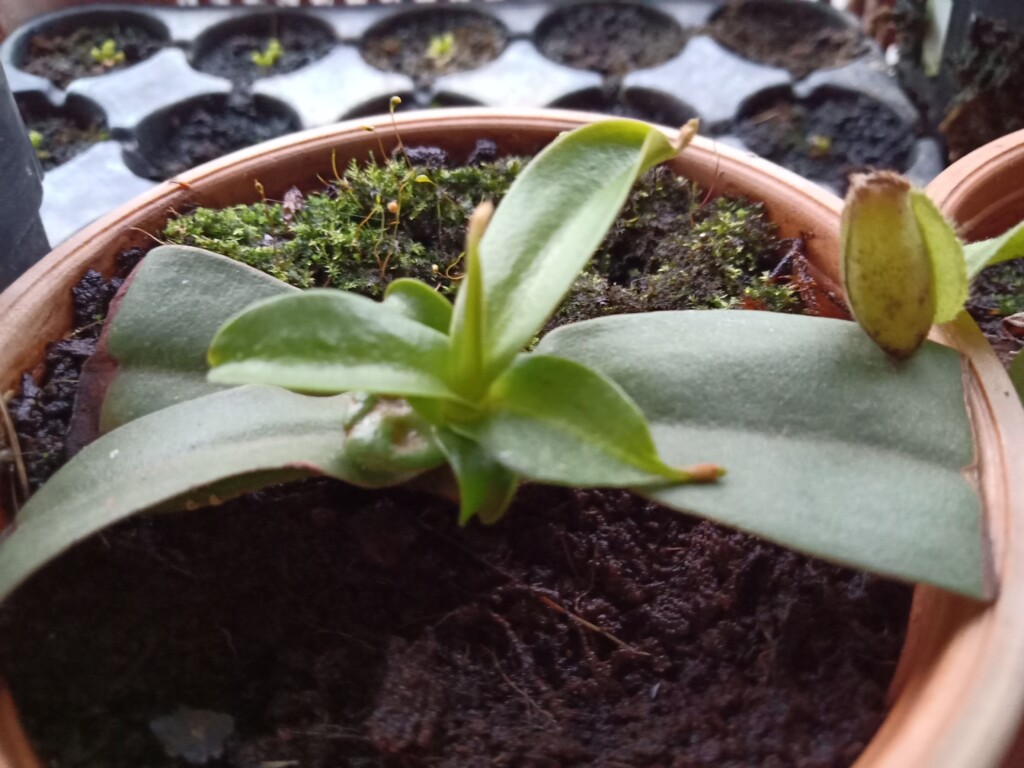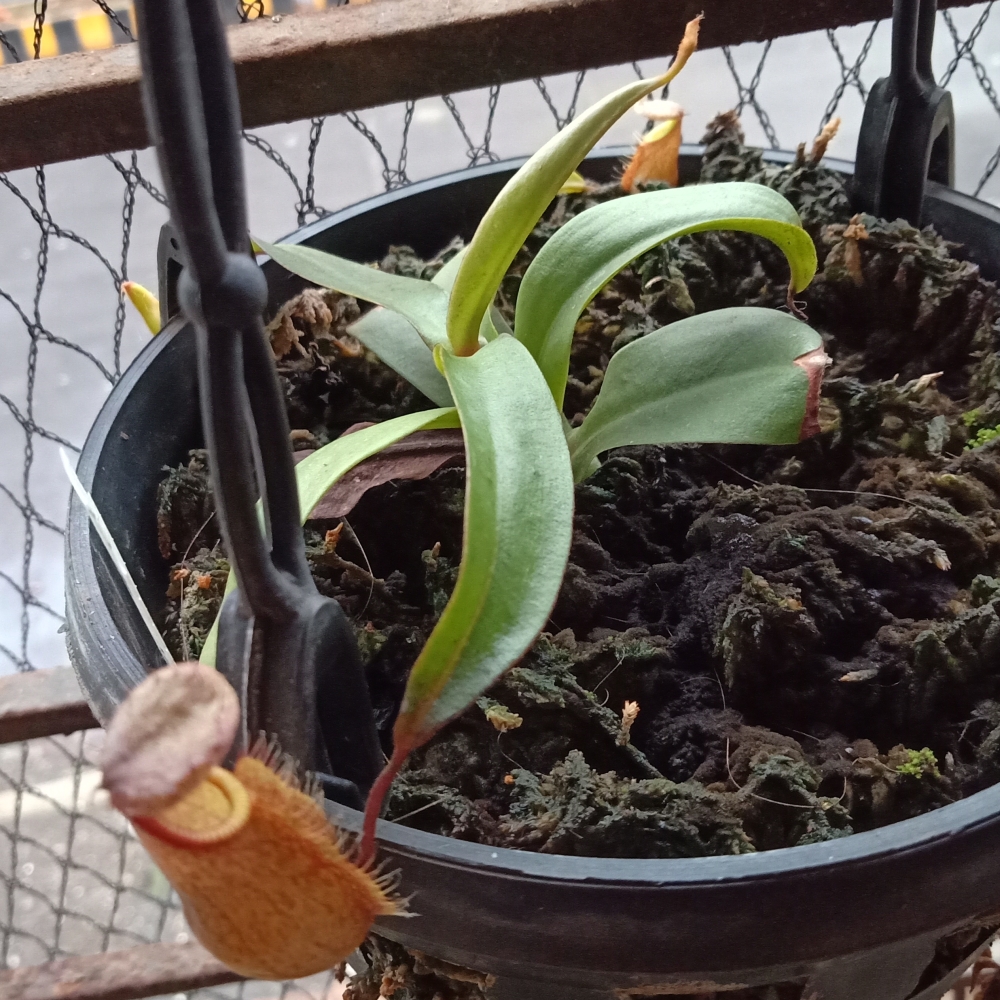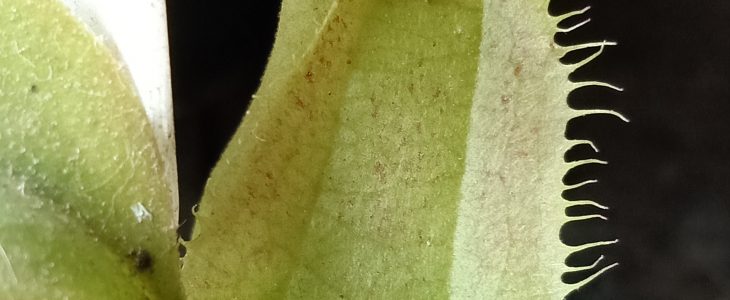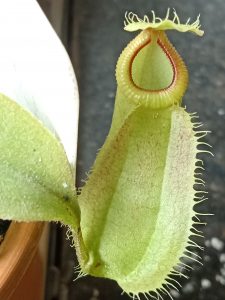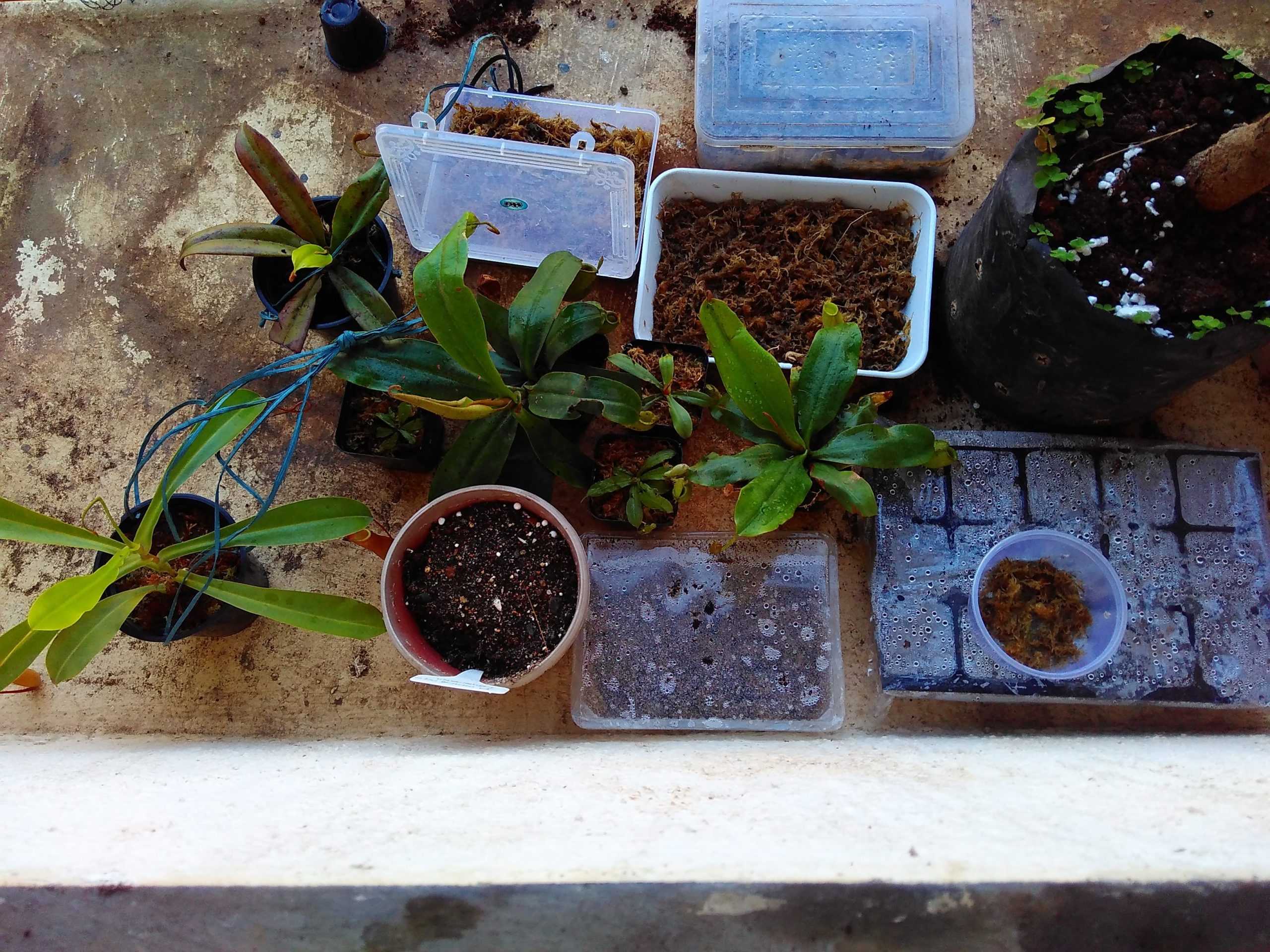The plants you buy will be shipped to you bare root. When you receive them, take them out of the packing and gently GENTLY place them on growing media. Create a hollow in the surface of the media and gently place the plant in it and cover any roots that are easily covered, with media. The roots of pinguicula are like small white hair and do little more than anchor the plant to the media and absorb some water. The roots being anchored in media is not very important to the survival of your new pinguicula. However, if you damage the fragile roots, you create openings for pathogens to enter the plant while it is still weakened from shipping.
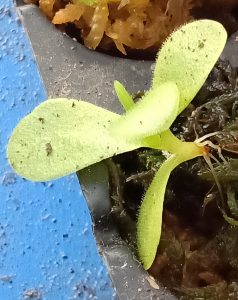
Pinguicula gigantea plantlet
Avoid rubbing the roots in any way. If they cannot be planted in media easily, it is absolutely fine to simply place the plant on the media without worrying about the roots at all. As the plant acclimatizes and grows, it will send out new roots that anchor it to the media. A ping is not too fussed by this.
Sometimes growing leaves of a ping will lift the roots right out of the media or the plant can also send out arial roots that don’t touch the media at all or the plant can simply grow in the direction of the light putting out new roots that sort of let it… “travel”. You planting it in some place does not mean that it will remain there. Here is a Pinguicula gigantea plantlet that I’d kept in too low light that decided to leave its pot in search of better light. If I had not spotted this in time, I’d have ended up with a very etiolated plantlet like a tube that sent out roots as it grew toward the light. As the current lowest leaves died, the plant would “move”.
This isn’t to say that your plant is going to start crawling around, just to stress that the roots of a pinguicula are attached to leaves. With new leaves come new roots that find new anchors. Regardless of whether these roots are anchored, new ones that grow will anchor the plant to the media. If you can cover existing roots with moist media, excellent, the plant will be able to settle and grow quicker, but if you damage the roots and keep the broken parts wet, you can kill a pinguicula like that by making it vulnerable to pathogens.
In the image below, you will see that I have placed a lot of small plantlets of pinguicula gracilis and pinguicula rotundiflora on a bed of sphagnum. It is difficult to make out in the phtoto, but the sphagnum is not very deep. It is a half an inch layer placed in a tray. I have simply placed the plantlets on top without worrying about their roots at all. You can see some fine white hair like roots in the photo. In a few days, the plantlets adapt to the surface and attach to it. Some of the roots will continue to grow in the air and that is fine.
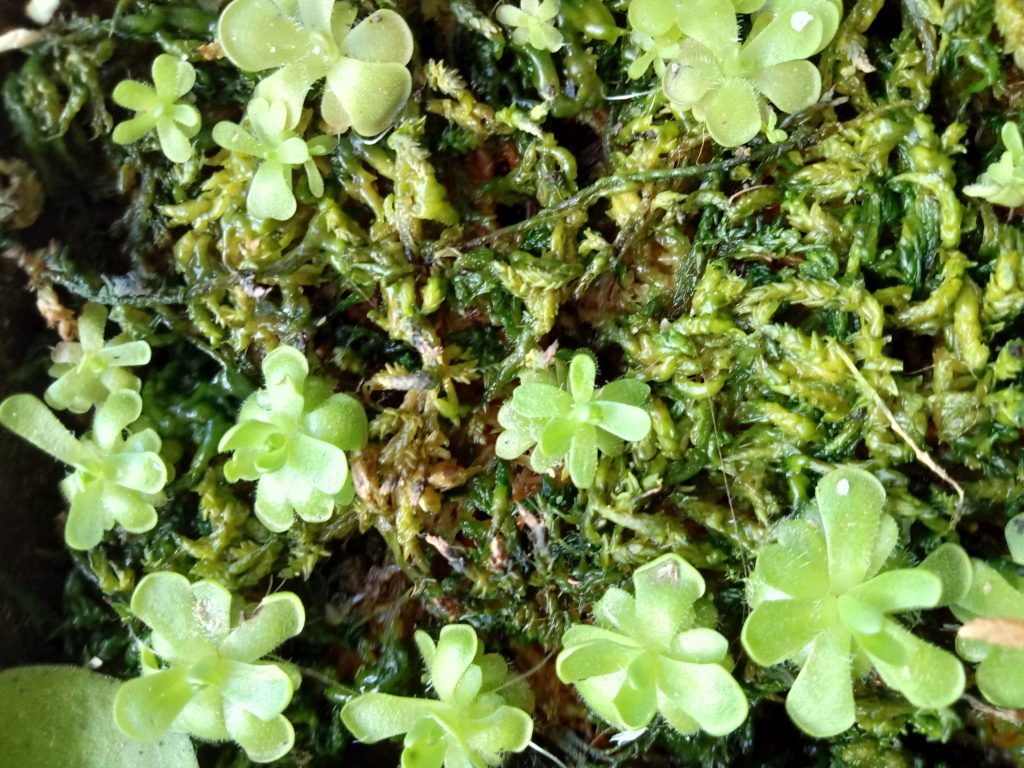
Pinguicula plantlets placed on sphagnum
If there are any leaves that get detached during shipping, you can place those on the media as well and if your growing conditions are good, they will form additional plants for you.
In terms of growing, think of giving the plant a space to hang out rather than PLANTING it firmly into place. If you grow succulents, you’ll find pinguicula easy.
Once your ping is in its pot, place it in a shady spot away from direct breezes. Avoid bright or direct light initially and only start increasing the light they get as they start growing again. It is very unlikely that you will be able to grow pinguicula in direct sunlight in India, unless you live in a really cool and misty place that has mostly cloud cover. However, most pinguicula will enjoy between an hour or two to several hours of direct light in the early morning or evening. Find out what your plant enjoys by very, very gradually moving it to brighter conditions – it is better to keep it in bright shade than too much direct sunlight – it will get cooked and die rapidly.
You can water it in, but if your media is damp, I have not really found it necessary. If you have damaged the roots, excessively wet media can make it easier for pathogens to enter the plant. This, I think is the biggest reason newly planted pings die. Keeping the plants too wet will encourage rot – particularly if the plants have arrived in shipping (less of a problem when transplanting).
Personally, I like to place any newly arrived plants on their growing media and simply mist lightly several times a day (if water is dripping from the leaves, pooling in the crown of the plant or the leaves are still wet five minutes later – that is drenching, not misting) till they start growing again, then reduce the frequency and start watering lightly. I never water my pinguicula too heavily. I give the pot a good soaking once in a while or just drizzle ome water on it if the surface appears dry.
The plants don’t really seem to care a lot as long as the humidity is high and you mist them well. Pinguicula can absorb moisture through their leaves easily as well as survive short dry periods well. If the humidity is low or you can’t find a spot sheltered from the breeze for them, you may want to put the plant and pot in a plastic bag to keep in the humidity and only increase it slowly once the roots seem to be established in the new media and start drawing water – the plant will resume growth of new leaves.
Another point to note here is that you can improve your chances of success dramatically by avoiding buying the plant so that it arrives at an adverse time in terms of climate. If it is summer and temperatures are above 30 degrees centigrade or approaching freezing, it is worth waiting for the weather to improve and getting a healthier plant that will recover and grow rapidly than a plant that may not survive the shipping or stress or take a long time to recover.
